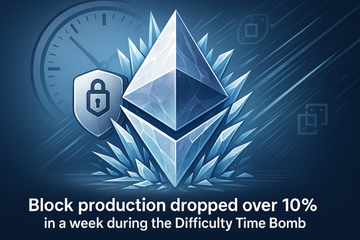If you've ever dabbled in Ethereum or just followed its winding journey from Proof of Work to Proof of Stake, you might have come across the term 'Difficulty Time Bomb.' Sounds like something out of a spy thriller, right? But it’s not a heist—just a carefully engineered part of Ethereum’s history that shook miners and, honestly, sparked a bit of healthy panic along the way.
So, What's the Deal with the Difficulty Time Bomb?
Let me explain. The Difficulty Time Bomb isn’t a literal explosion, but it did disrupt the comfortable world of crypto mining. Picture this: since Ethereum’s early days (August 2015, if you’re keeping track), the developers wanted to ditch Proof of Work mining and steer everyone toward Proof of Stake. But how do you nudge an entire community away from a model that lines their pockets? Simple—you make PoW mining so painful it’s almost not worth the effort. That’s where the bomb comes in.
The mechanism, activated in November 2016, was designed to ramp up the computational difficulty miners face when trying to solve blocks. The bomb’s effects were slow at first, but—like water dripping into a leaky basement—the problems would start small and become impossible to ignore.
An Ice Age for Ethereum Miners
Have you heard people talk about the 'Ice Age' in Ethereum circles? They’re not joking. The entire idea behind the Difficulty Time Bomb was to, well, send mining into a deep freeze. Blocks that once took about 15 seconds to process began creeping slower, going from seconds to minutes. If the bomb had been left unchecked, you might’ve needed a fresh cup of coffee between each block!
Naturally, this didn’t just annoy miners—it cut into their rewards and made many of them re-think sticking with Proof of Work. And you know what? That was entirely the plan. By ramping up difficulty, the Ethereum team nudged everyone closer to Proof of Stake, which they believed (and still argue) is a greener, more efficient model.
Delays, Upgrades, and the Final Countdown
Like a clock you can’t quite turn off, the Difficulty Time Bomb kept ticking… until developers hit the snooze button a few times. Five separate upgrades delayed the full brunt of the bomb, and each time, the community had to adjust their expectations. The Gray Glacier Upgrade in June 2022 was an especially big one, as it signaled (at least according to most in the know) the final delay before “The Merge”—the much-hyped shift to Proof of Stake.
Why all the stalling? Simple—transitioning a network as gigantic as Ethereum takes time, not to mention a lot of consensus. No one wants to risk billions in digital assets just for the sake of progress. So, these delays were more about caution than cold feet.
Here’s Where It Gets Technical (But Stick with Me)
If you’re into numbers, or just love a good graph, some folks tracked blocks produced per week as a way to measure the bomb’s impact. When the bomb “went off,” block production dropped sharply—sometimes by more than 10% in a week. According to community research, blocks started getting spaced out, and mining profitability tanked. Everyone—from casual miners running rigs to pros with custom gear—felt the squeeze.
What About Security and Hardware Wallets?
Now, while all this drama was going on, hardware wallets like Trezor and Ledger were quietly becoming essential for anyone serious about safeguarding their ETH and ERC-20 tokens. Why? Because the end of Proof of Work brought uncertainty. Suddenly, more users worried about chain splits or replay attacks—those moments when a coin launched on two chains might be spent in both places if you’re not careful. Having funds on a reputable hardware wallet was (and still is) the best way to keep assets insulated from unexpected changes the network might throw at you. The cool thing is, both Trezor and Ledger were quick to update firmware and offer guides during The Merge, making sure folks didn’t get left behind while the network evolved.
Was It All Worth It?
If you ask Ethereum purists or environmentalists, the answer is a resounding yes. The Difficulty Time Bomb didn’t just coax the community into supporting Proof of Stake. It forced the kind of serious debate that’s rare in big projects—sure, it ruffled feathers, but it also led to major upgrades and innovations along the way.
The gradual ramp up in difficulty made clear: either prepare for the new, or get stuck in the old. Plenty chose to stick with mining, squeezing every last ETH from their rigs. Others pivoted to staking, learning to run validator nodes and participate in the new system. The split was inevitable, but not as acrimonious as some feared.
Looking Back—and Peering Ahead
- Ethereum effectively made history with its transition, and the Difficulty Time Bomb was a big part of it.
- Hardware wallet makers remained responsive, earning trust among crypto holders with quick firmware updates and clear safety instructions.
- The mining slow-down wasn’t just a technical headache; it was a cultural one, sparking debates on what “decentralization” means and who really controls a blockchain’s direction.
- The 'Ice Age' moments—when block times soared—are now a quirky memory, but they teach a lasting lesson: intentional friction can drive real change, especially in open-source projects.
So, next time you hear the phrase 'Difficulty Time Bomb,' remember it’s less about explosions and more about calculated evolution. Whether you were a miner reluctant to let go, a staker eager for progress, or just a crypto fan with a Trezor tucked in the back of your desk drawer, you witnessed one of blockchain's boldest moves. And you know what? The story isn’t quite over. As Ethereum keeps rolling out new features, who knows what clever (or devious) mechanisms developers might cook up next? Stay curious—and maybe keep that hardware wallet handy, just in case.
References:
Ledger Academy Glossary
Blocks per week as an indicator of the difficulty bomb











